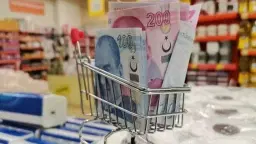So, now it is a greater probability that in the third quarter, growth rate might be weaker than the 2.9 percent in the second quarter.
Last week I promised to write on the Central Bank’s required reserve ratio policy. But I want to postpone this discussion as important figures related to growth rate were announced meanwhile. On Tuesday, industrial output figures for August were released: industrial output diminished year-on-year by 1.5 percent. Year-on-year industrial output growth excluding monthly fluctuations had assumed a downwards starting in January 2011. As a result, annual output growth rates became insignificant lately. In August, industrial output decreased for the first time after a long period.
Harsh competition for export markets
Unfortunately, figures for September are not favorable either. First, capacity utilization ratio for September decreased year-on-year. Figures on the automotive sector were also released. Automobiles and light trucks are two important products of the sector. During the first eight months of 2012, production of both decreased year-on-year. The downwards movement continued in September, though at a smaller race compared to the first eight months. A similar trend is observed also for the overall automotive sector. Another striking point is that, imports in the automotive sector increased considerably. In other words, domestic demand for automotive products has been on the rise. Therefore, the main reason for the downfall in the sector’s output was the drop in exports, at least in September. The performance of the automotive sector validates once again the well-known: the European crisis has been affecting Turkey’s exports and thus industrial output negatively.
Speaking of the devil, I would like to talk about the revised growth estimates for Europe the IMF released on Tuesday. Unfortunately, the revision was downwards compared to the estimates announced in July, both for 2012 and 2013. The picture is even darker for Europe. The second point to accentuate is that estimated growth rates are substantially below the actual growth rates achieved in 2011 and 2010, implying that hard times are ahead for Turkey in terms of exports. With the possibility of harsher competition in export markets, a relative rise in inflation (a rise in production costs) before our rivals is likely to impede Turkey’s performance.
Credit growth slowed down
Domestic credit growth figures demonstrated a meager recovery in the first quarter of the year, which, if continued could bolster growth to some extent. During the past weeks, however, credit growth rate slowed down. Here are some figures for consumer loans (annualized rate of growth in thirteen-week average credit volume compared to the previous week): during the first seven months of 2011, average growth rate was 40.2 percent. In the last quarter of 2011 and the first quarter of 2012, the rates stood at 16.6 percent and 11.1 percent respectively. Later on, growth rates started to increase, with 19.6 percent in the second and 19.2 percent in the third quarter. In September, on the other hand, there was a clear downturn in the pace of growth: 16.8 percent.
So, now it is a greater probability that in the third quarter, growth rate might be weaker than the 2.9 percent in the second quarter. Even though the Central Bank, in the light of the conditions in export markets, the credit figures discussed above and the external uncertainties discussed before, is lowering the interest rate, we shouldn’t have great expectations for the growth performance in the final quarter of the year. Yet, there is a positive thing against all the negative developments. In such milieu, Turkey is still growing though at a low rate. It appears that Turkey’s growth rate in 2012 overall will be close to world average. This cannot be overlooked.
This commentary was published in Radikal daily on 11.10.2012





